
Roots
There exists a profound dialogue between textured hair and the methods woven by those who came before us, a dialogue that speaks to protection even as we sleep. For centuries, across continents and through trials, communities with textured hair understood the delicate nature of their strands and developed ingenious ways to safeguard them overnight. This inherited wisdom, passed down through generations, forms a living archive, a legacy stretching from elemental understanding of the hair itself to sophisticated cultural practices. The very structure of textured hair, with its unique coil and curl patterns, predisposes it to certain vulnerabilities—dryness, friction, mechanical damage—especially when unbound against rough surfaces like sleep cloths.
Ancestral caregivers recognized these susceptibilities, observing how exposure could diminish hair’s vitality. Their nightly practices were not merely routines; they were acts of preservation, rooted in a deep respect for hair’s intrinsic worth and its connection to identity and spiritual well-being. These methods were born from observation, necessity, and a sophisticated, albeit often unwritten, understanding of hair biology. They offer a historical lens through which to view our contemporary hair care, revealing that much of what we consider ‘modern’ has long held a place in the ancestral lexicon of beauty and protection.
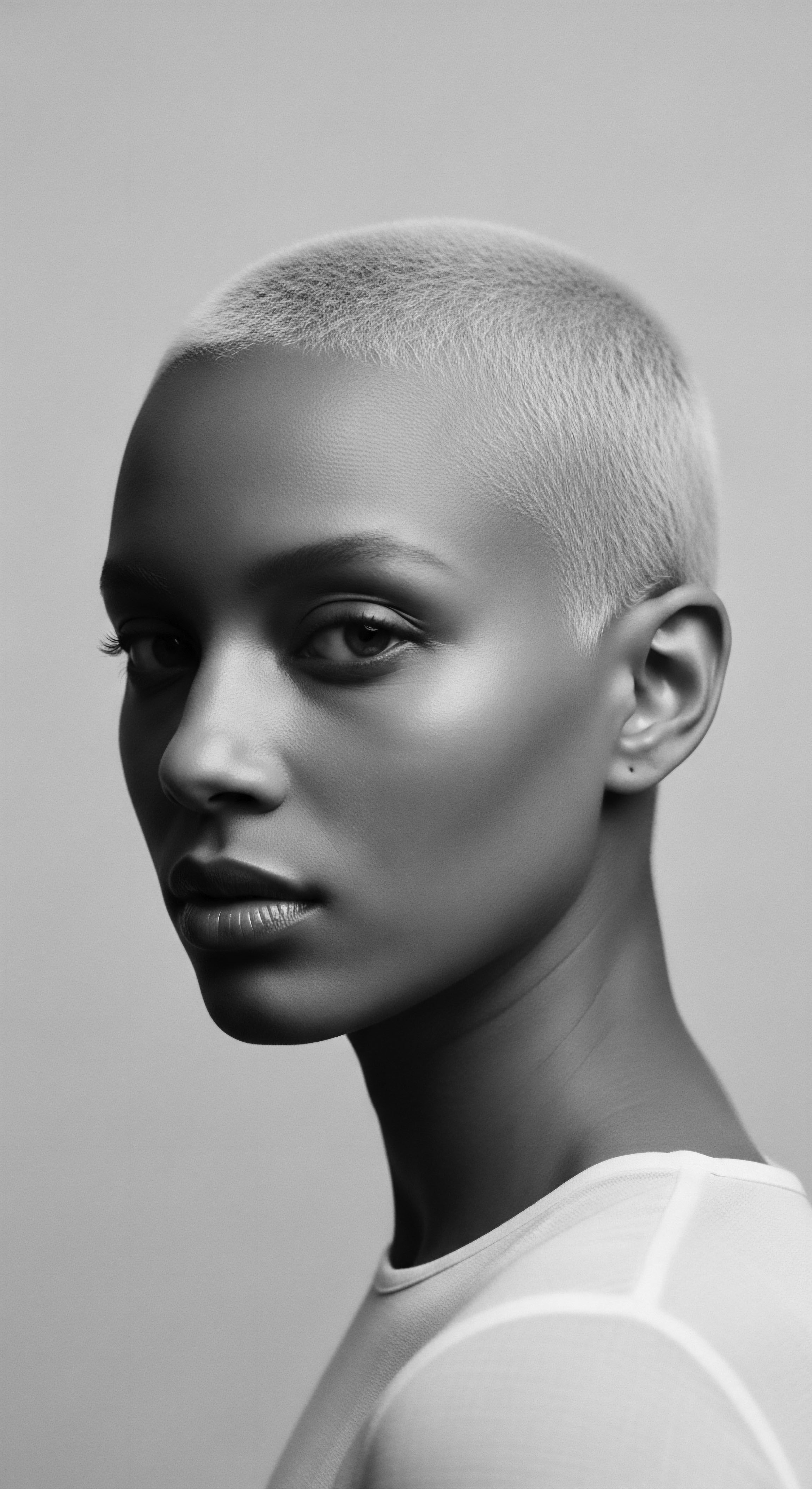
Hair’s Elemental Biology ❉ An Ancestral Understanding
The human hair strand, at its core, is a complex biological structure. Its outermost layer, the Cuticle, consists of overlapping, flattened cells, much like shingles on a roof. These scales lay flat when hair is healthy, reflecting light and providing a protective shield for the inner cortex. When these cuticles become raised or damaged, hair can become rough, prone to tangles, and lose moisture.
Textured hair, by its very nature of coiling and bending, experiences more points of contact and potential friction along its length compared to straight hair. This inherent characteristic means its cuticle layer is more susceptible to lifting and damage from external forces, such as tossing and turning during sleep. Ancestral communities, though lacking microscopes, understood this vulnerability intuitively. They noticed how hair, left uncovered, would become matted, dry, and lose its luster by morning. Their remedies were directly aimed at preserving this vital outer layer and maintaining the hair’s moisture balance.
Ancestral nightly hair practices were sophisticated acts of preservation, born from keen observation and a deep respect for hair’s intrinsic worth.

Traditional Hair Classifications and Cultural Context
In many African societies, hair was more than adornment; it was a visual language, a repository of identity, and a conduit for spiritual connection. Hairstyles and hair care conveyed information about one’s:
- Social Status ❉ Position within the community or family.
- Marital Status ❉ Indicating if one was single, married, or widowed.
- Age ❉ Marking rites of passage or life stages.
- Ethnic Identity ❉ Distinguishing tribal affiliations or regional origins.
- Religious Beliefs ❉ Connecting to deities or spiritual practices.
These classifications extended to the methods of care. Hair that appeared “undone” or neglected could signify distress or even disarray within a person’s life or spirit. This deep cultural connection meant that protecting hair overnight was not merely a cosmetic concern; it was a spiritual, social, and personal imperative, ensuring the continuation of identity through the next day’s dawn. The practices were often communal, fostering bonds as women and girls cared for one another’s hair, passing down techniques and stories.

Historical Environmental Factors and Hair Care
The environments in which many ancestral communities lived also shaped their hair care practices. Arid climates, dust, and outdoor labor necessitated protective measures. Nighttime offered an opportunity to shield hair from further exposure and allow reparative processes to occur. The materials available—natural fibers, plant oils, and animal fats—were ingeniously adapted to address these environmental challenges.
The selection of specific plant extracts, for instance, often reflected generations of empirical knowledge about their moisturizing, strengthening, or soothing properties. The methods employed were often simple, yet remarkably effective in minimizing dehydration and mechanical wear on the hair cuticle. This resourceful approach speaks volumes about the deep-seated wisdom in these communities, a wisdom that we continue to draw upon for textured hair care today.
| Ancestral Observation Hair becomes tangled and dry when left unbound at night. |
| Modern Scientific Correlate Friction from rough sleep surfaces lifts hair cuticles and causes moisture loss. |
| Ancestral Observation Wrapping hair helps it retain its 'pattern' or 'shape' for days. |
| Modern Scientific Correlate Protective styles reduce manipulation and preserve hydrogen bonds, extending style longevity. |
| Ancestral Observation Natural oils and butters nourish hair, keeping it supple. |
| Modern Scientific Correlate Natural lipids (like shea butter, coconut oil) provide emollients and seal the hair shaft, reducing water evaporation. |
| Ancestral Observation The deep wisdom of ancestral practices often aligns with current scientific understanding of hair biology and its needs. |

Ritual
The methods for protecting textured hair overnight were more than simple routines; they were deliberate rituals, steeped in cultural meaning and practical ingenuity. These practices ensured the vitality of the strands, preparing them for the day ahead, and reinforcing connections to community and ancestry. The choice of technique, the materials used, and the very act of preparing hair for rest became a tender exchange, preserving not only physical hair health but also a heritage of care.
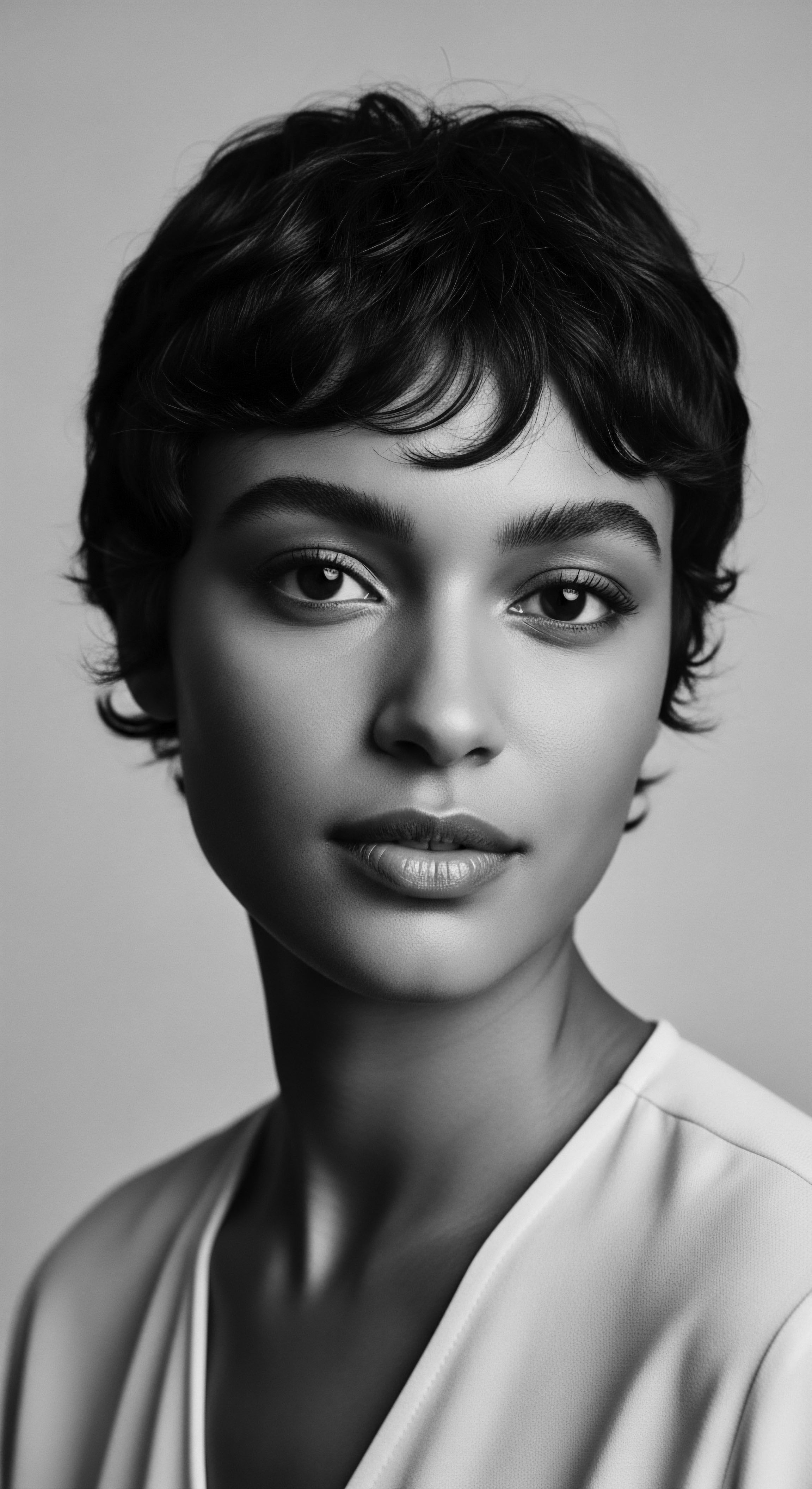
Protective Styling ❉ Ancient Roots and Enduring Forms
Across various African societies and the diaspora, protective styling served as a cornerstone of overnight hair preservation. Styles like braids, twists, and cornrows, often intricate and symbolic, were a testament to meticulous care and cultural expression. These styles minimized manipulation, reduced exposure to environmental elements, and kept the hair neatly contained, preventing tangles and breakage during sleep.
The practice of braiding hair dates back thousands of years, with archaeological evidence tracing cornrows to 3000 BC in parts of Africa. Beyond their practical benefits, these styles often communicated social status, age, or tribal affiliation.
Nighttime protective styling, a practice rooted in antiquity, ensured hair health and preserved complex cultural expressions through the hours of rest.
One specific example of a protective styling method with deep ancestral roots is hair threading , known as “Irun Kiko” among the Yoruba people of Nigeria. This technique, documented as early as the 15th century, involved using flexible wool, cotton, or rubber threads to section and wrap hair into three-dimensional corkscrew patterns. This method not only created a beautiful style but also served as a protective measure, keeping the hair contained and minimizing friction.
The careful wrapping with thread acted as a barrier, preventing individual strands from rubbing against each other or against harsh surfaces overnight, thus safeguarding the cuticle and reducing moisture loss. This meticulous approach speaks to an ancestral understanding of mechanical protection for delicate textured hair.

Head Wraps, Bonnets, and Their Historical Basis
The use of head coverings for sleep has a long and layered history, particularly within Black and mixed-race communities. Headwraps and bonnets, often made of soft fabrics, played a central role in protecting hair overnight. These coverings shielded hair from the abrasive qualities of typical sleeping surfaces, like cotton pillows, which can absorb moisture from hair and cause friction, leading to frizz and breakage.
In various African regions, headwraps have been worn for centuries, often signifying wealth, marital status, or tribal identity. During the era of enslavement, head coverings took on a more complex meaning. While sometimes forced upon Black women as a symbol of subjugation, these women ingeniously reclaimed the headwrap, transforming it into an expression of dignity, resistance, and a means of cultural preservation.
Despite societal pressures, many Black American women continued to wrap their hair in silk or other soft materials at home to preserve hairstyles, a practice that continued long after the abolition of slavery. This private, nightly ritual became a quiet act of defiance and self-care, ensuring hair remained styled and protected for the coming day, a testament to enduring resilience.
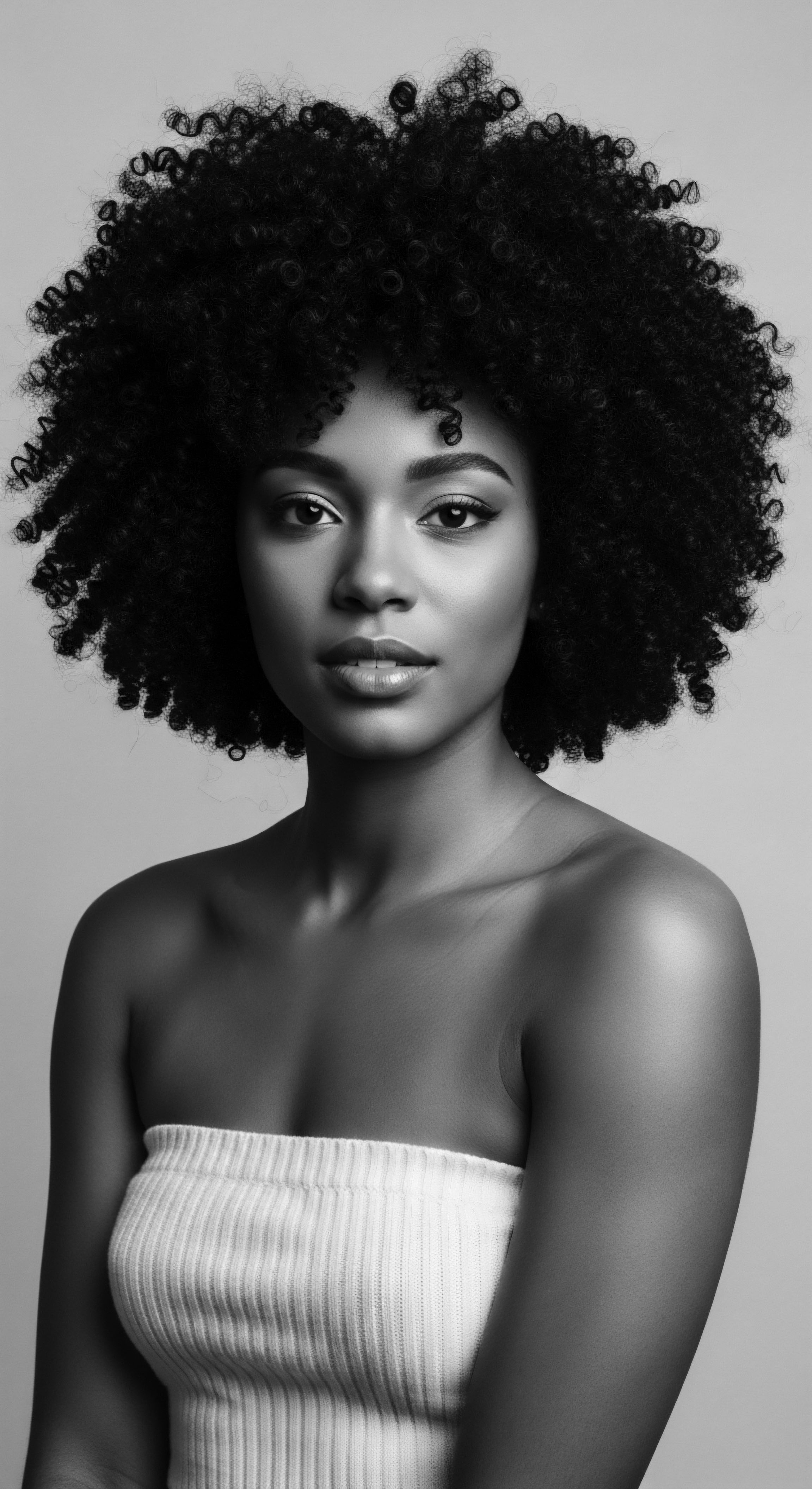
Traditional Tools and Their Role
The toolkit for ancestral hair care was often derived directly from the natural environment, shaped by ingenuity and necessity. These tools, used in conjunction with protective styles and coverings, ensured comprehensive nighttime protection.
- Combs and Picks ❉ Crafted from wood, bone, or horn, these tools were used gently to detangle hair before styling, minimizing breakage that could be exacerbated overnight.
- Hairpins and Ties ❉ Made from natural fibers, carved wood, or metal, these held styled hair securely in place, preventing unraveling during sleep.
- Plant Fibers and Threads ❉ As seen with ‘Irun Kiko’ threading, natural fibers were used to wrap and contain sections of hair, offering a soft yet firm hold that reduced friction and maintained curl patterns.
- Natural Fabrics ❉ Soft cloths derived from plants like cotton (often softer, higher thread count varieties or processed in specific ways to reduce friction) or animal fibers were fashioned into wraps and coverings for nightly protection. While silk became prominent later, early soft cloths served similar protective functions.
| Historical Period/Context Pre-colonial Africa |
| Common Covering/Material Various traditional cloths, woven plant fibers |
| Primary Protective Benefit Dust protection, style preservation, spiritual significance |
| Historical Period/Context Enslavement Era (Diaspora) |
| Common Covering/Material Scraps of fabric, handkerchiefs, cotton rags (later reclaimed for silk) |
| Primary Protective Benefit Concealing hair, minimizing damage from harsh conditions, covert communication |
| Historical Period/Context Post-slavery to Mid-20th Century |
| Common Covering/Material Cotton bonnets, silk scarves, headwraps |
| Primary Protective Benefit Style preservation, moisture retention, protection from friction |
| Historical Period/Context Modern Era |
| Common Covering/Material Satin/silk bonnets, scarves, pillowcases |
| Primary Protective Benefit Reducing friction, retaining moisture, maintaining hair health for all textures |
| Historical Period/Context The adaptation of available materials into protective coverings reflects a continuous dedication to hair care across generations. |

Relay
The enduring legacy of ancestral methods for overnight hair protection extends far beyond mere technique; it is a profound testament to resilience, adaptation, and the deeply ingrained cultural value of textured hair. These practices, honed over centuries, represent a dialogue between human ingenuity and the elemental needs of the strands. They offer a comprehensive system of care, informed by ancestral wisdom and increasingly validated by contemporary scientific understanding, shaping our approach to textured hair heritage and its holistic wellbeing.

Holistic Care from Ancestral Wisdom to Present Practices
Ancestral hair care was intrinsically holistic, recognizing that external hair health reflected internal wellness. This philosophy emphasized nourishing the body, mind, and spirit as foundational to vibrant hair. Traditional regimens often incorporated natural ingredients, not merely for superficial effects, but for their intrinsic medicinal and restorative properties. The shift from external application to understanding internal factors is a modern echo of this ancient wisdom.
Hydration, balanced nutrition, and stress reduction, now recognized as key for hair vitality, were implicitly understood and addressed through ancestral diets and communal wellness practices. The consistency of these nightly rituals, too, played a role, instilling a rhythm of care that supported long-term hair resilience. This generational practice ensured that the intricate structure of textured hair, from its sensitive cuticle to its unique curl pattern, received sustained attention, fostering its ability to withstand daily environmental pressures and mechanical stress.
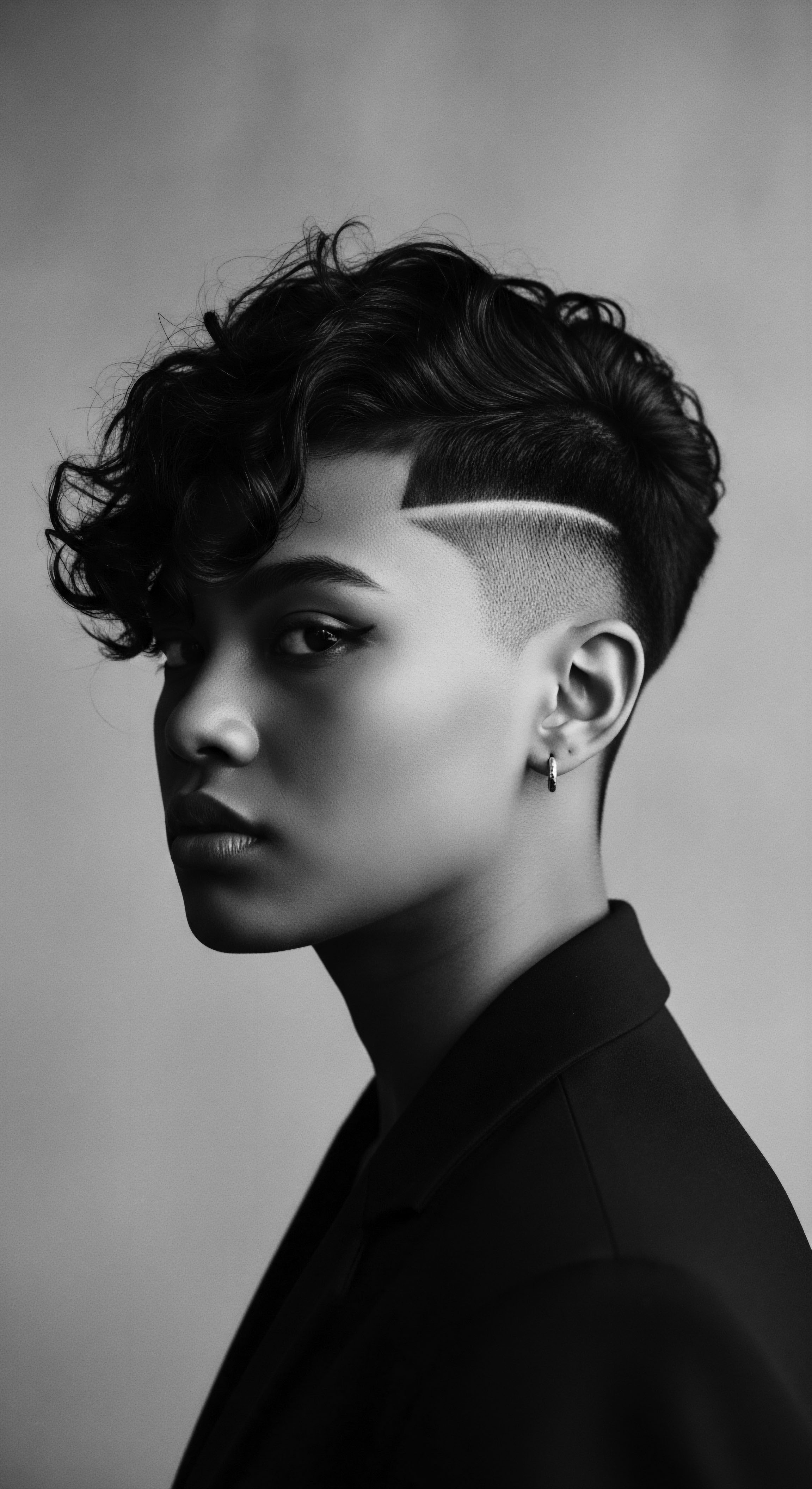
What Does Hair’s Cuticle Reveal About Nighttime Damage?
Understanding the hair’s cuticle, its outermost protective layer, offers a scientific lens on why ancestral nighttime methods were so effective. The cuticle, composed of overlapping cells, forms a shield. When hair rubs against rough surfaces, like cotton pillowcases, these cuticle scales lift, much like a pulled thread on a woven cloth. This lifting exposes the hair’s inner layers, leading to moisture loss, frizz, and eventual breakage.
Ancestral methods, particularly the use of head coverings fashioned from smooth materials or tightly contained styles, directly addressed this mechanical vulnerability. By minimizing friction, these practices kept the cuticle scales flat, thus retaining the hair’s natural moisture and integrity overnight. This quiet act of protection, performed in the dark hours, was a preventative measure against the daily wear that could compromise the hair’s very structure, ensuring the strands remained strong and supple.
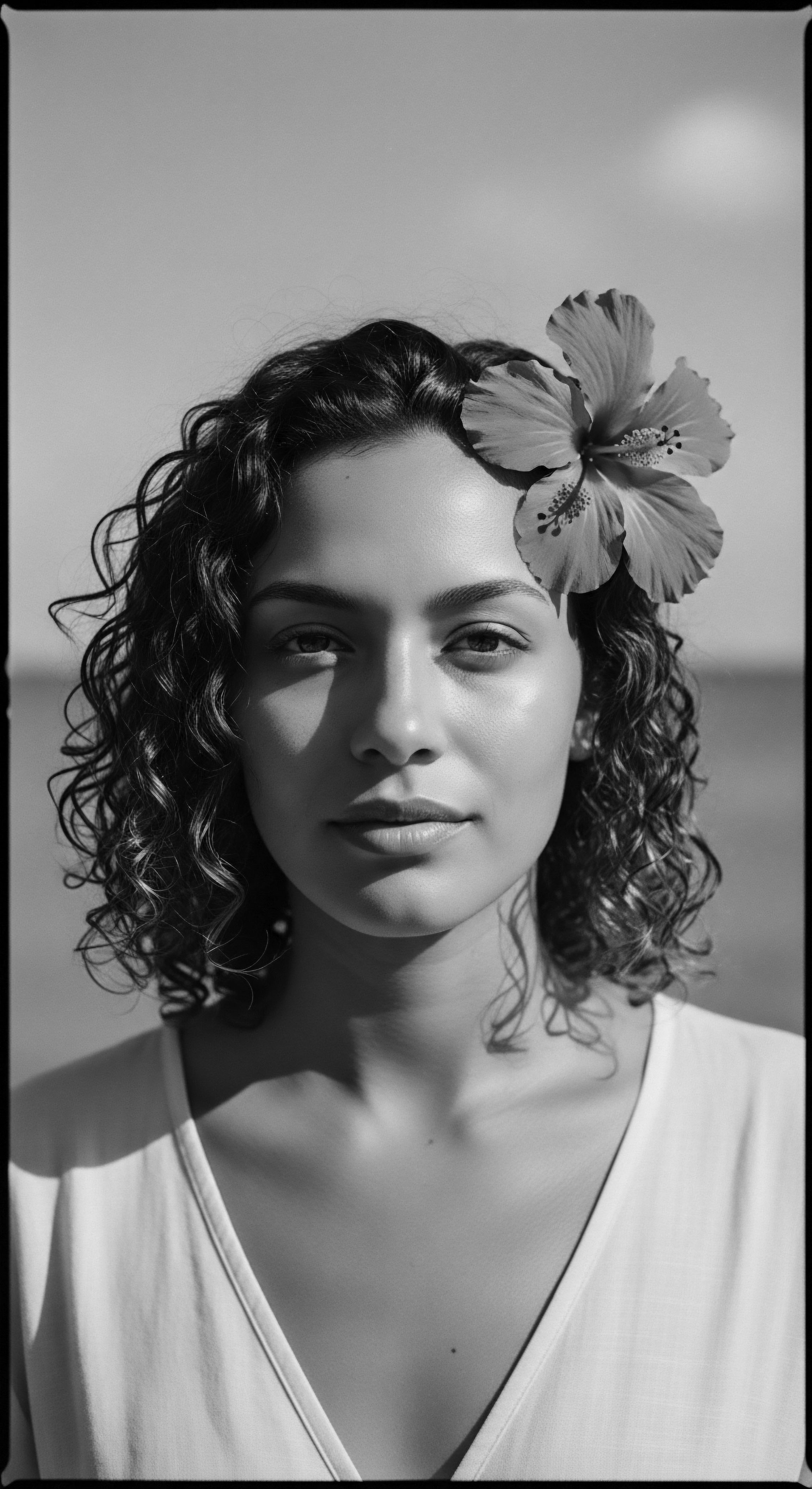
The Nighttime Sanctuary ❉ Bonnet Wisdom and Legacy
The practice of covering hair at night, particularly with bonnets or wraps, holds immense cultural and practical weight within the heritage of textured hair care. This seemingly simple accessory developed from necessity into a symbol of self-care and cultural pride. During the era of enslavement, Black women were often compelled to wear head coverings, a measure intended to dehumanize and erase their cultural identity. Yet, in a profound act of reclamation, these coverings became a tool of resistance and identity.
They were adapted to protect delicate styles, preserve moisture, and shield hair from the harsh conditions of labor and deprivation. Even after the formal end of slavery, the tradition of wrapping hair at night persisted, transitioning from a survival mechanism to a cherished routine for maintaining hair health and extending hairstyles.
A statistical insight from the post-slavery era underscores this resilience ❉ A 1905 advertisement for hair bonnets in The Indianapolis Recorder, a prominent Black newspaper, highlighted their utility for “preserving your hair while you sleep” and maintaining “well-dressed hair” (The Indianapolis Recorder, 1905). This commercialization reflects how deeply integrated and valued the practice had become within Black communities, transcending its oppressive origins to become a celebrated and practical aspect of hair care, passed down through matriarchal lines. The continued use of satin and silk for bonnets and pillowcases today is a direct descendant of this ancestral wisdom, recognizing the superior ability of these smooth fabrics to reduce friction and allow hair to glide without disturbance, thus protecting the cuticle and preventing moisture evaporation. The bonnet, therefore, is not merely a piece of cloth; it is a repository of history, a symbol of enduring care, and a connection to a profound heritage of self-preservation.
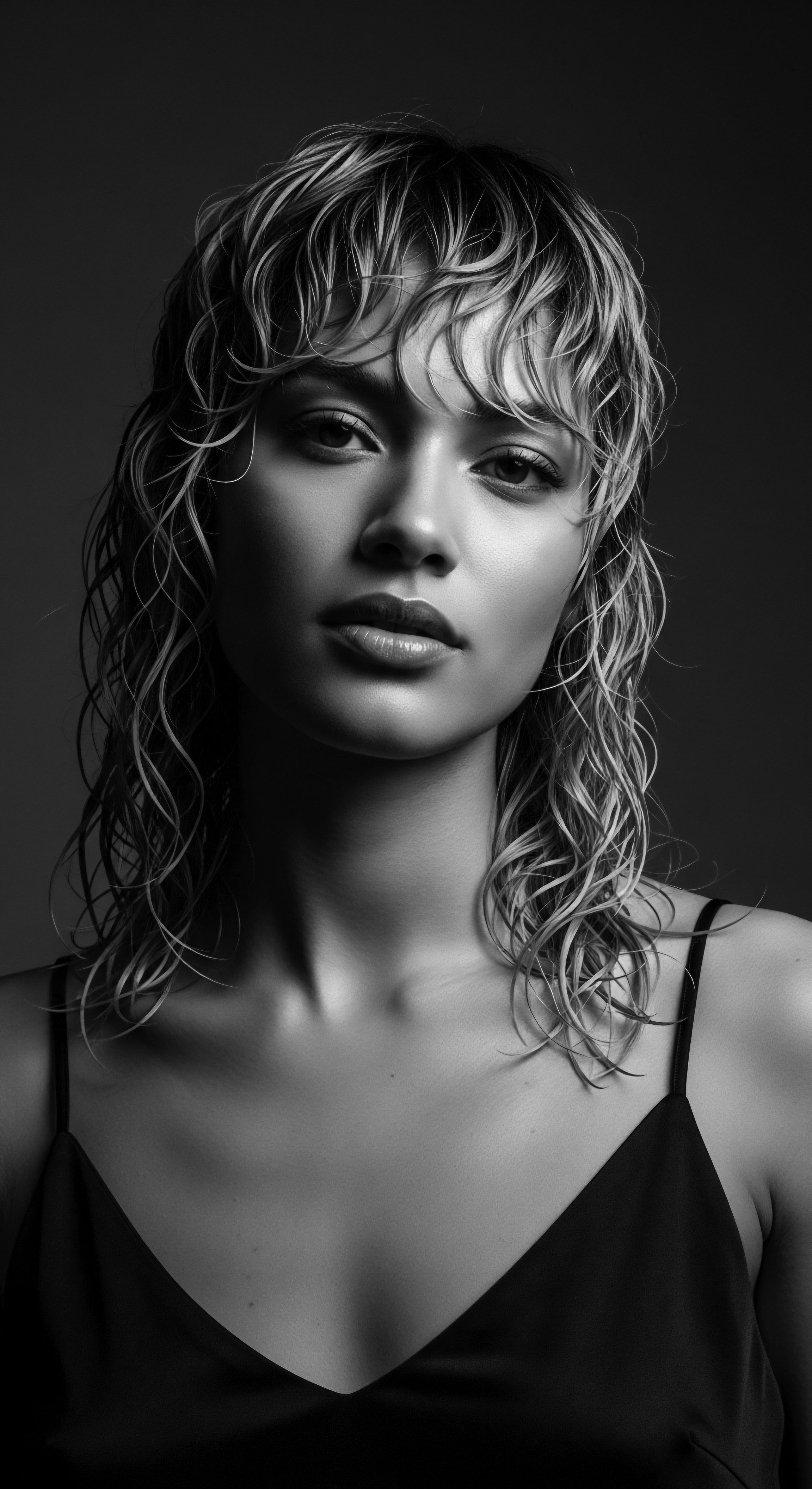
Ancestral Ingredients and Modern Science
The ancestral pharmacopeia for hair care was rich with natural ingredients, each chosen for its observed benefits. Many of these traditional ingredients find their scientific validation in modern dermatological and cosmetic research, showcasing the foresight of past practices.
- Shea Butter (Vitellaria Paradoxa) ❉ Harvested from the nuts of the African shea tree, this butter was used for its incredible moisturizing and emollient properties. Modern science confirms its richness in fatty acids and vitamins A and E, which seal moisture into the hair shaft and condition the scalp.
- Coconut Oil (Cocos Nucifera) ❉ Widely used in coastal African and diasporic communities, coconut oil was valued for its deep conditioning abilities. Research shows its unique molecular structure allows it to penetrate the hair shaft, reducing protein loss and providing significant moisture.
- Plant-Based Oils (e.g. Baobab Oil, Argan Oil) ❉ These oils, sourced from various indigenous trees, were applied for their purported strengthening and shine-enhancing qualities. Contemporary studies indicate they contain antioxidants and essential fatty acids that nourish the scalp and hair, contributing to overall hair health.
- Herbal Infusions (e.g. Rosemary, Hibiscus) ❉ Used as rinses or incorporated into oil blends, these herbs were chosen for their stimulating or conditioning effects. Science now points to certain compounds in these herbs that can promote circulation, possess anti-inflammatory properties, or provide natural conditioning.
The careful application of these ingredients before bedtime, often massaged into the scalp and along the hair strands, served multiple purposes. It provided nourishment, created a protective barrier against moisture loss, and helped to keep styles intact. This symbiotic relationship between natural resources and meticulous application speaks to a deep, empirical understanding of textured hair’s specific needs, a wisdom that continues to inform effective hair care regimens today.
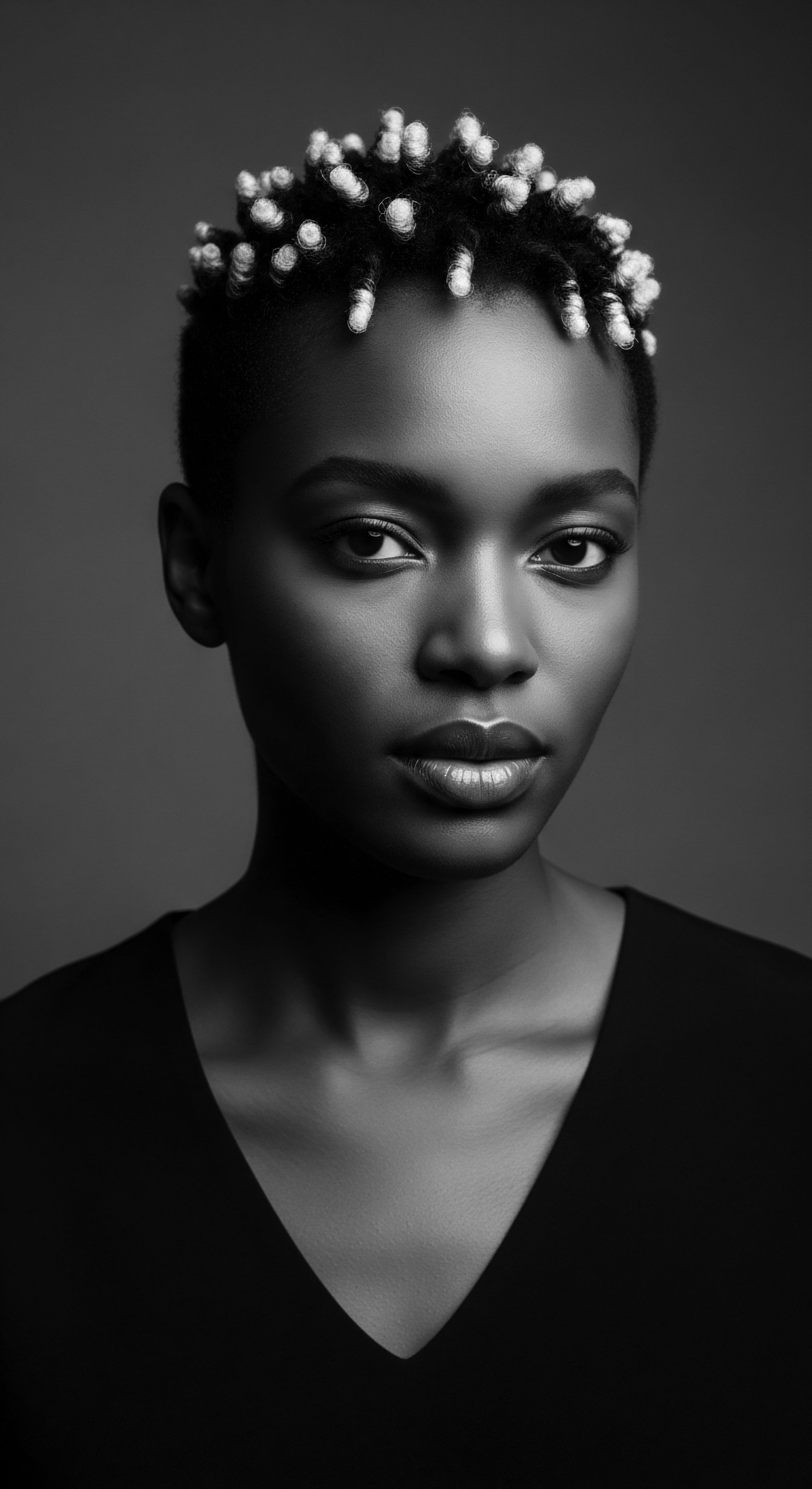
Reflection
The journey through ancestral methods of nighttime hair protection is more than an academic exercise; it is a reconnection with the very Soul of a Strand. These practices, born from acute observation and deep cultural understanding, reveal that textured hair care is not a recent innovation, but a continuous stream of inherited wisdom. From the fundamental biology of the cuticle to the profound symbolism of a headwrap, each ancestral method stands as a testament to the resilience and resourcefulness of Black and mixed-race communities.
Their nightly rituals were acts of devotion, ensuring that hair, so deeply intertwined with identity and spirit, remained vibrant and protected, ready to greet the new day. This enduring heritage reminds us that caring for textured hair is a profound act of honoring those who came before us, a living conversation with our past, and a powerful statement of continuity for our future.
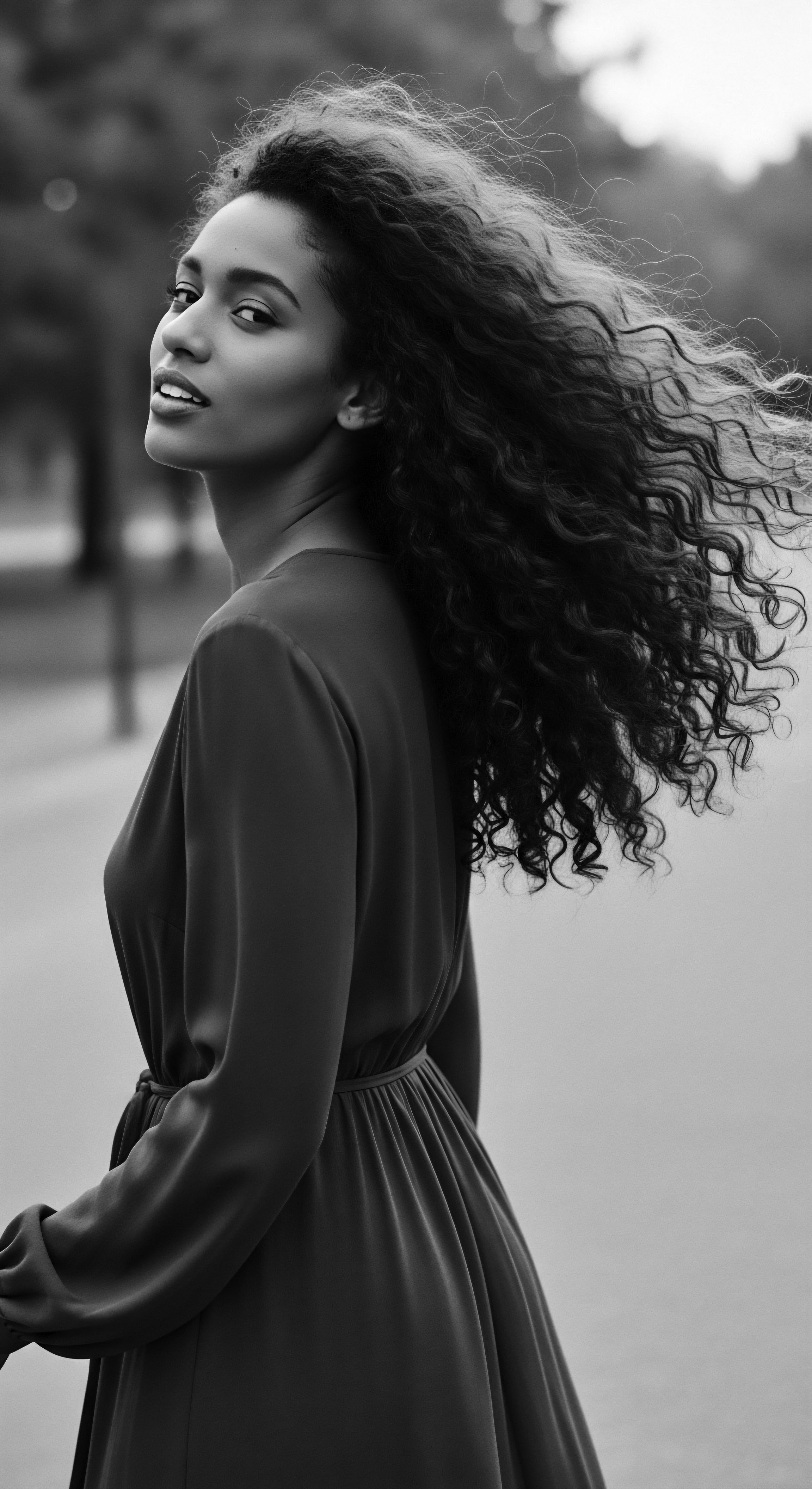
References
- The Indianapolis Recorder. (1905, May 27). Advertisement ❉ Hair Bonnets .
- Byrd, A. & Tharps, L. (2014). Hair Story ❉ Untangling the Roots of Black Hair in America. St. Martin’s Griffin.
- Walker, A. (2001). Madam C.J. Walker ❉ Entrepreneur. Chelsea House Publishers.
- Banks, I. (2000). Hair ❉ A Cultural History. Rizzoli International Publications.
- Mercer, M. (1994). African Hair ❉ A Cultural Exploration. The African-American Cultural Museum.
- Okoro, B. (2018). The Cultural Significance of African Hairstyles. Journal of African Studies.
- Opoku, A. A. (1978). West African Traditional Religion. F.E.P. International Private Limited.
- Dodson, H. (2005). The Black Hair Book ❉ African-American Hair Care for the 21st Century. Fireside.
- Cochran, S. M. (2016). Aesthetic and Cultural Significance of African American Hair. Dermatologic Clinics, 34(1), 101-110.
- Wilderness. (2015). The history & meaning of head wraps across Africa .
